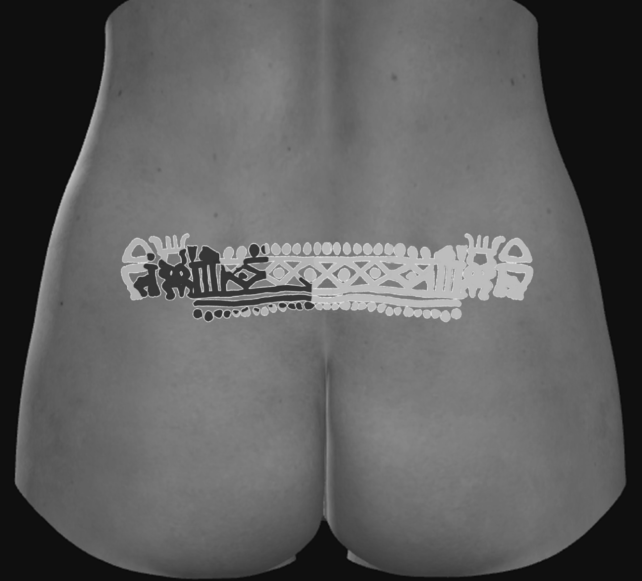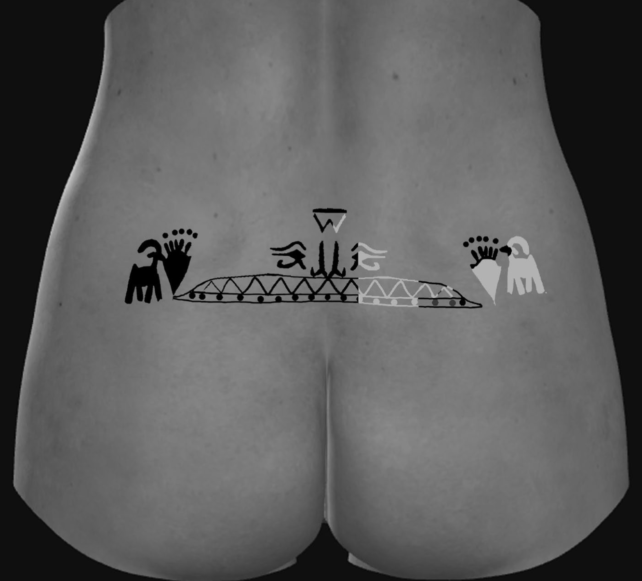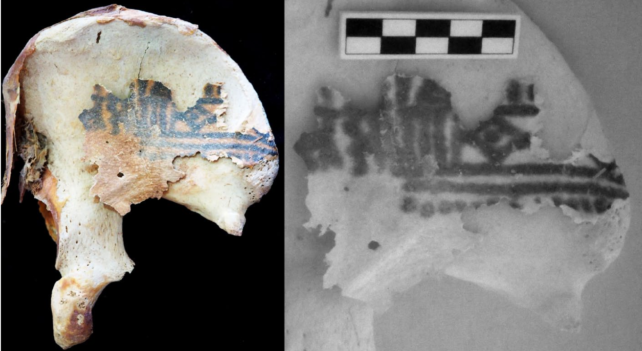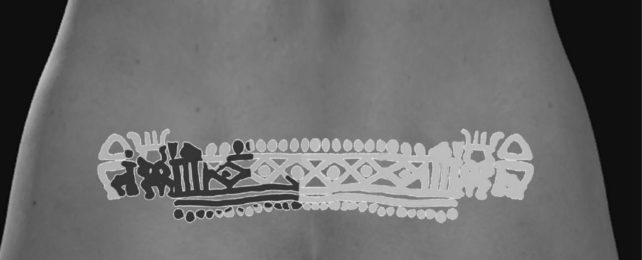Evidence of tattoos found adorning the mummified skins of two women from an ancient town on the bank of the Nile River suggests the lower back has been a trendy tattoo spot for more than 3,000 years.
One of the female mummies described by researchers in a recent paper was excavated from the site of Deir el-Medina roughly a century ago, but only recently did experts notice black discoloration on parts of her skin.
Just above her buttocks is a band of permanently drawn diamonds, similar to patterns seen on the ceilings of tombs from the time.

The second female mummy analyzed by researchers was found in 2019, but her lower back tattoo only became visible using infrared photography. The symmetrical pattern on her lower back is also slightly different to the other mummy, featuring a water pattern and a line of plants.
Researchers think this might represent the shores of the Nile, where women could have gone to soothe themselves during pregnancy or menstruation. The scene is watched over by a wedjat-eye, a representation of the Egyptian god Horus used to symbolize healing, well-being, and protection.

These aren't the only female mummies who have been found all tatted up, either. The first tattooed mummy was uncovered in Egypt in 1891, and in the decades since, seven others have been uncovered in Dier el-Medina alone, including the two described above.
Some of these mummies show tattoos not only on the lower back, but on the neck and hips.
The mummy found in the 20th century, for instance, has a hip that is permanently marked with an image that looks like the Egyptian god Bes, who, among other responsibilities, was a protector of pregnant women.

Many of the tattoos on these mummies are placed around the hips and lower back, which suggests their function might be related to reproduction. Even figurines of female bodies from this time are decorated around their mid-section, although whether or not those etchings represent tattoos is unclear.
"Acute lower back pain frequently accompanies labor, and, in some women's cases, menstruation, as well," the authors of the recent analysis write.
Perhaps lower back tattoos first arose as a way to protect against the pains of womanhood.
A marsh along the banks of the Nile might be a soothing place for women to spend time during pregnancy or menstruation. There's a chance ancient women in Egypt had the sanctuary tattooed on their lower back to bring some of that soothing power wherever they went.
"However, it is important to consider ubiquity in this interpretation," the authors admit.
"If the tattoos were intended to ensure successful pregnancy and childbirth, or avoid pain for the woman who bears them, we would expect to find the presence of these markings far more frequently."
But not all adult female mummies found in Egypt are similarly tatted. Some well-preserved skin appears to be bare, while other mummies are covered in more than 30 tattoos.
Researchers can only hypothesize as to why that was. Perhaps only those women involved in the birth-giving process, like midwives, were tattooed in this way. Or maybe it represented the members of a goddess's cult.
Whatever the case, these tattoos were clearly not 'trashy'. They were fierce.
The study was published in The Journal of Egyptian Archaeology.
